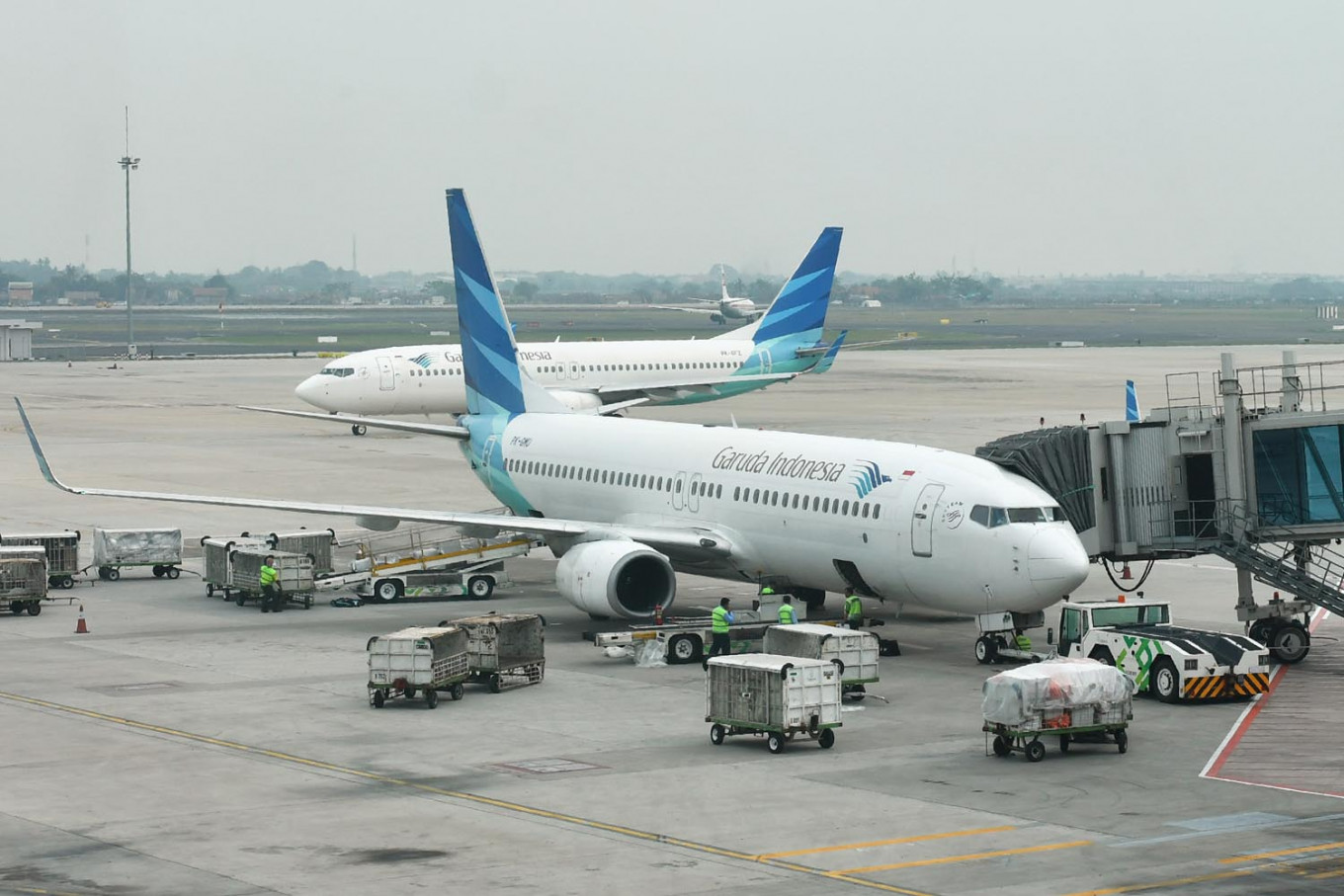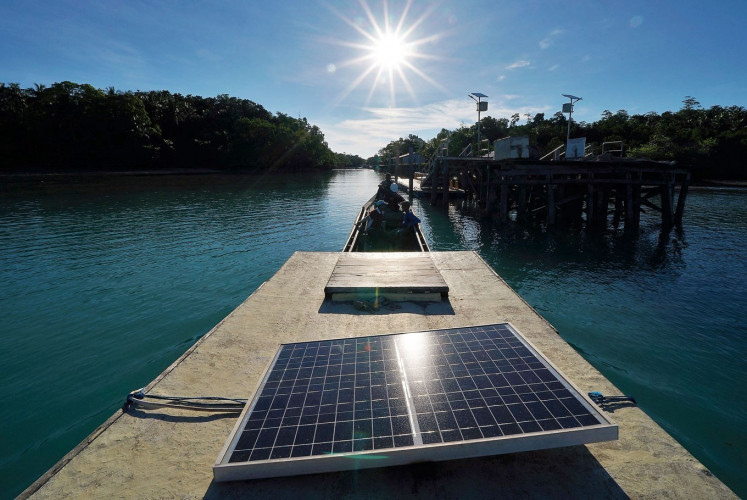Popular Reads
Top Results
Can't find what you're looking for?
View all search resultsPopular Reads
Top Results
Can't find what you're looking for?
View all search resultsGaruda traffic remains low despite eased restrictions
While there has been a slight improvement in airline traffic after the eased restrictions, the number of passengers is still down more than 90 percent, and 70 percent of its aircraft remain grounded, according to the airline's president director, Irfan Setiaputra, on Wednesday.
Change text size
Gift Premium Articles
to Anyone
N
ational flag carrier Garuda Indonesia is still seeing low passenger numbers amid persisting health fears, despite the government’s relaxation of social restrictions to gradually reopen the economy.
While there has been a slight improvement in airline traffic after the eased restrictions, the number of passengers is still down more than 90 percent, and 70 percent of its aircraft remain grounded, according to the airline's president director, Irfan Setiaputra, on Wednesday.
“The past month, the past three weeks, there have been positive gains, but they are still far from pre-COVID-19 levels,” Irfan said during Inventure’s Indonesia Brand Forum 2020 webinar.
He said the public remained wary of the threat of COVID-19 on board, despite health protocols in place on flights.
The current aviation health protocols are based on circular No. 13/2020 issued recently by the Transportation Ministry, covering mandatory procedures from pre-flight to post-flight to reduce the risk of virus transmission. The measures include physical distancing, intensified cleaning and sanitation inside the aircraft and the use of face coverings, among other things.
Irfan cited the industry consensus that it would take until the end of 2022 to recover to pre-pandemic levels.
An incident involving the airline occurred on June 27, when a passenger was allowed to board a Garuda Indonesia flight from Jakarta to Sorong, West Papua, despite having recently tested positive for COVID-19
While it is set to receive an Rp 8.5 trillion (US$599.6 million) working capital guarantee from the government, the airline experienced a 31.9 percent annual drop in passenger and cargo revenue in the first quarter of this year.
In response to a continued downturn of revenue, Garuda carried out measures to cut costs, but Irfan confided there was a limit to the cost-saving adjustments as the state-owned airlines feared additional layoffs would be a blow to the country’s economy.
Throughout the crisis, the airline terminated the contracts of 180 pilots and hundreds of their workers.
Irfan explained during the webinar that the airline industry was innately a “very tough” industry with small margins, high cost and tight competition in which prices could not be determined arbitrarily.
“We are talking of a single-digit margin. So when a disruption happens, the implication for our bottom line, cash-wise, is immediate [and] drastic,” Irfan noted.
The year 2020 will be the worst year in history for airlines, according to the International Air Transport Association (IATA) in a report published on June 9. Global airlines are expected to lose US$84.3 billion this year, in which revenue will fall 50 percent. The losses will continue to next year, albeit to a lesser extent, the report says.
Amid the pandemic, Garuda had tapped into the logistics market. Earlier last month, the airline launched KirimAja (Just Send It), a delivery service operated by its transportation and logistics company PT Aerojasa Cargo.
Earlier in June, state-owned airport operator Angkasa Pura I (AP I) reported a significant increase in passengers in June, amid the eased travel restrictions.
The number of passengers in the country’s 15 airports managed by AP I was recorded at more than 222,000 in the first half of June, a stark contrast from around 76,000 flying in the entire month of May.
“AP I is optimistic that passenger traffic will gradually increase,” the company’s president director, Faik Fahmi, said in a press release on June 17.










